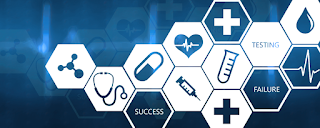A gene panel is a test that helps in the analysis of multiple genes at the same time for cancer-associated mutations. BRCA1 and BRCA2 are two genes responsible for the production of proteins that help in suppressing tumors. These proteins help in repairing damaged DNA and prevent the growth of tumor cells. Damaged DNA may not be repaired accurately when either of these genes is mutated or altered, resulting in a condition wherein the cells are more prone to develop a further genetic mutation that can cause cancer.
Both women and men can be analyzed for mutations in the BRCA1 or BRCA 2 genes. The analysis also helps in the evaluation of risk for developing a different type of cancer, including cancer of the fallopian tubes, ovaries, and breasts in women and prostate in men.
The global Gene Panel Market is expected to expand substantially, due to rise in the prevalence of chronic diseases across the globe. Moreover, an increase in the number of company initiatives across the world and benefits of gene panels are major factors that are anticipated to propel the gene panel market during the forecast period. However, stringent rules and regulations for pharmaceutical companies and safety concerns about genetic data are likely to hamper the gene panel market in the coming years. Nonetheless, ongoing research and development in the field gene sequencing is expected to present significant opportunities for the development of the market during the forecast period.
Request to View Brochure of Report -
The global gene panel market can be segmented based on product & service, technique, design, application, end-user, and geography. Based on product & service, the global gene panel market can be divided into test kits and testing services. In terms of technique, the market can be classified into amplicon-based approach and hybridization-based approach. Based on design, the global gene panel market can be categorized into predesigned gene panel and customized gene panel. In terms of application, the market can be classified into cancer risk assessment, pharmacogenetics, diagnosis of congenital diseases, and other applications. Based on end-user, the market can be segmented into research and academic institutes, hospital and diagnostic laboratories, and pharmaceutical and biotechnology companies.

Comments
Post a Comment